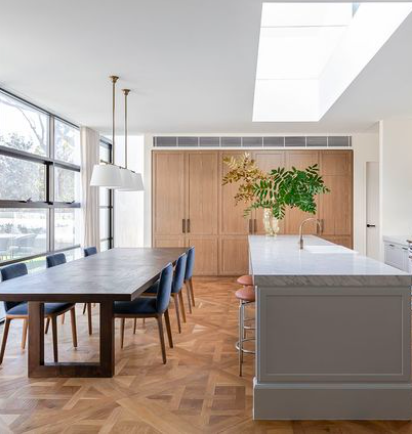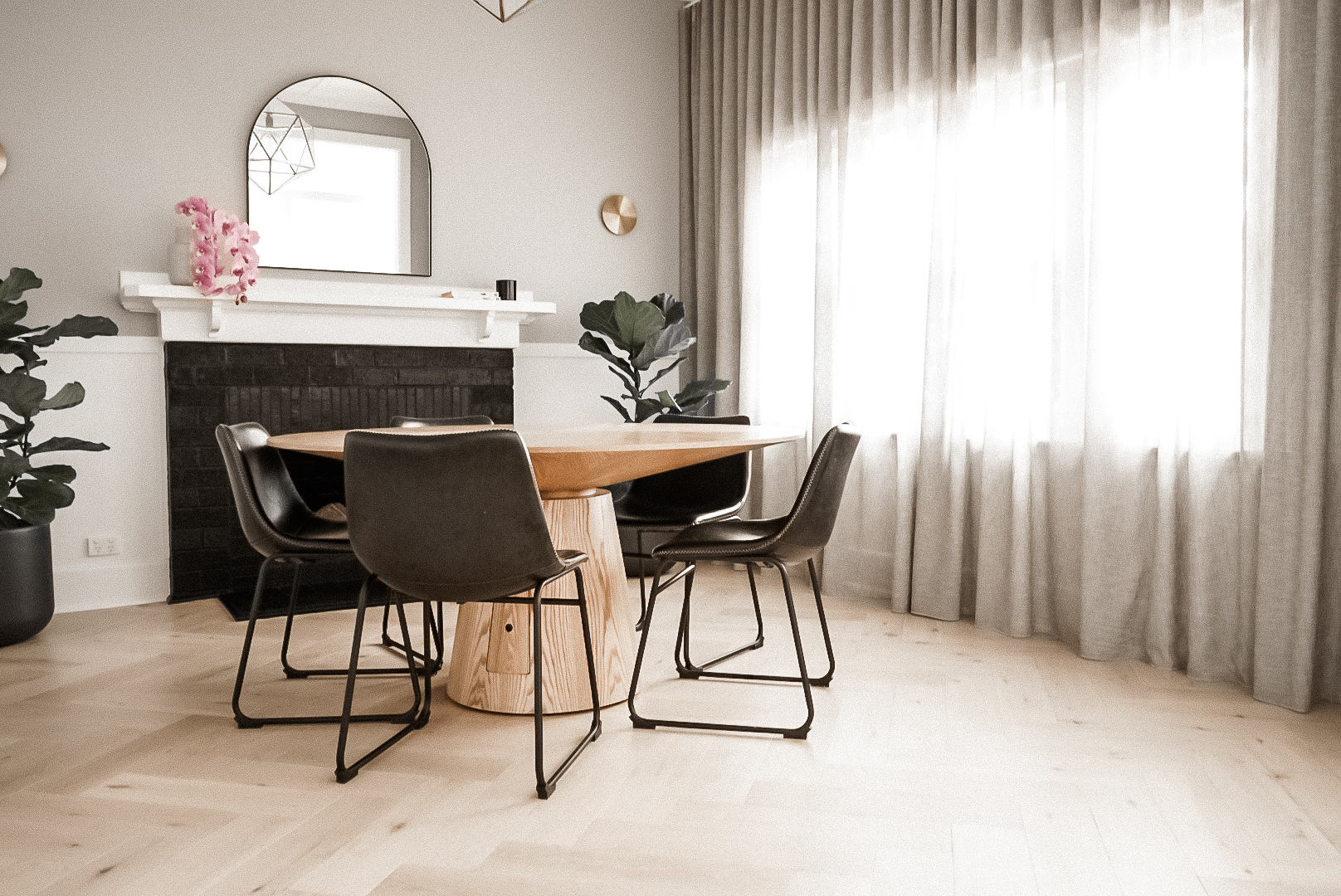I’ve got to be honest, when engineered floors first started appearing in the showrooms, I was a little sceptical. I had this perception that these were just a cheaper, inferior alternative to the solid timber floors that we are accustomed to here in Australia.
But after living with solid (“non-engineered”) boards for many years and understanding that they are far from perfect, I thought it was worth investigating further…
Now after using engineered boards on several of my projects over the last few years, I’ve got to say that I’m a big convert. I’ll admit that they’re not the right choice for every home, but they really do have alot of benefits and I wanted to give you a quick run down so that you can work out if they’d be a good fit for your project.
First of all… when we talk about Engineered Timber Boards, what are we referring to?
Engineered timber floorboards are just a manufactured product that are available to buy and install as a finished floor. In contrast to solid timber floor, they are made up of more than one layer of timber. Usually the top layer is 100% natural hardwood (between 2 to 6mm thick) and the substrate is a core of cross-laminated plywood.
Just to be clear… when I’m talking about engineered timber floors, I’m not talking about synthetic “timber-look” floors, I’m talking about all natural timber – they just happen to be engineered or manufactured in a way that make them different to a solid timber board.
So, what are the benefits? Why would we choose an engineered board over a solid one?
I’ve found that there can be alot of uncertainty when working with floors that require staining or different treatments after installation – having a pre-finished surface removes all of this uncertainty as you can see how it looks in it’s finished state before you commit to it.
Because of the cross laminated core that is achieved with the layering of timbers, they are less likely to expand, contract or warp. We’ve experienced alot of these problems with solid boards we installed in an old Victorian that we renovated years ago – we still have issues with bowing of the floors as they expand with the changes of weather and moisture.
As they come as a pre-finished floor, they are quick to install and ready to walk on immediately.
The surface is often more durable if it has been UV treated during the manufacturing process.
As the sanding and finishing of the floors happens off site, there are many Low or Zero-VOC options available and no residue sanding dust on site that may settle and cause irritation.
Most can be sanded back and refinished, similar to a solid board.
As a manufactured product, there may be a warranty available to guarantee the performance.
But, what are the disadvantages?
Well, no product is perfect, so there are a few things to look out for…
There are definitely some inferior engineered floor products on the market, so it’s important to know that not all boards are created equally and you need to do your research so that you know what you’re getting for your money.
You’re not able to customise the finish of the floor on site, as they arrive in a pre-finished state, they are ready for installation and the colour and finish are already locked in.
I’ve found that not all builders like using them – as they are installed with a pre-finished surface at a stage of the project when alot of other trades are still working, they need to be protected against damage. You can’t just install your brand new, finished floorboards into your home and chuck a few drop sheets down while dozens of trades continue to work on the rest of the house. Talk to your builder and make sure you’re both comfortable with how they will work with your project and how they will be protected so that you’ve not dealing with damaged floors at the end of the build.
Hope that gives you a bit of an insight into these products and whether they might be suitable for your home.
If you have any questions, don’t be shy… I’m here to help. You can usually find me over at Instagram, so just drop me a DM.
Talk soon,
Amanda

The ability to make good, confident decisions is the number one most valuable skill you can have when building and renovating… not the ability to be ‘creative’, or having a ‘good eye’ for design or knowing your way around a building site… you just need to know how to make good decisions… and lots of them.

If you think your biggest decision is whether to go for timber floorboards or tiles in your new home, then you might be surprised to see how many more decisions you need to make to specify your timber flooring.

[…] you want to go for solid or engineered boards – if you’re not at that stage yet, check out this blog post I wrote on engineered […]